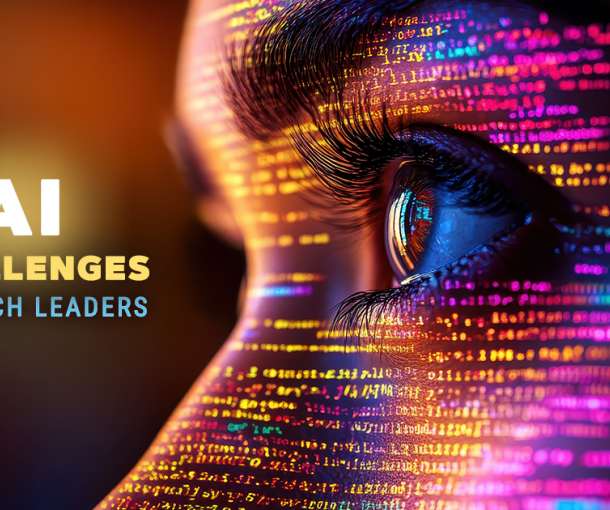
We look at 2022’s top 10 tech stories – and why they matter
1 – ELON MUSK BUYS TWITTER
This is easily the most impactful tech story of the year – and the one tech story with the most potential to impact society at large. What started out as something of a lark by the world’s (now second) richest man – Musk started buying up shares in Twitter in March. He then offered to buy the rest of the company for $44 billion in April – and by October it had morphed into something infinitely more chaotic and unpredictable.
This train wreck – or perhaps more appropriately, rocket explosion – is something we frankly should have seen coming. And it calls into question the very future of not only Twitter, but of social media in general. It begs the question of whether better legislation is needed to protect end-users, as well as the countries they call home.
In that respect, it’s not necessarily all negative, as we’re long overdue for a reckoning around what social media needs to become, and our individual and collective responsibility to ensure that happens.
2 – THE JULY 8TH ROGERS CROS-CANADA OUTAGE
We’ve had telecommunications outages in Canada before, but this one broke new ground. That’s because this was the first time a national carrier was unable to provide even basic 911 emergency services during an outage.
Post-event analysis also exhibited significant dysfunction among Rogers support teams who were unable to accept offers from competing carriers to reroute emergency-services traffic.
On the plus side, in the aftermath of this event, Canada’s government has charged Rogers and other carriers to improve their coordination in advance of future outages. It won’t stop them from happening, but it will mitigate their impact.
It also sends a clear message to organizations – in Canada and beyond – that disaster recovery planning and business continuity planning must include vendor-level redundancies. As disruptive as mass-scale outages can be, this one is already having a positive impact on DRP/BCP planning.
3 – META’S METAVERSE PROJECT CRASHES AND BURNS
Mark Zuckerberg rebranded the company once known as Facebook as Meta in 2021 to better reflect the fact that its future lies in the metaverse, and not social media.
Unfortunately, things haven’t gone as planned, with the company burning through $10 billion on metaverse development this year alone. Mark Zuckerberg either can’t or won’t provide a more precise timeline for when this new venture will start producing meaningful revenue – meaning Meta has to somehow prop up its fading social media business for an indefinite period before its supposed replacement is ready for prime time.
Even worse for Meta, employees are refusing to use the buggy beta metaverse software, and not even emails from senior leadership begging them to try it out seem to be working. The company’s share prices have collapsed, and it implemented its first-ever mass layoffs since the company’s founding in 2004. 2022 will go down in history as the year it became obvious that Meta-nee-Facebook could very well become the next Myspace.
4 – RUSSIA’S INVASION OF UKRAINE SPAWNS GLOBAL SPIKE IN CYBERATTACKS
Russia is one of the world’s top supporters of state-sponsored cybercrime (China, Iran, and North Korea are the other three) so it surprised no one when Vladimir Putin launched his Ukraine invasion and simultaneously launched a digital front in parallel to the military one.
The net impact globally has been a major increase in attacks against global entities – governments, companies, agencies, and individuals – who may have expressed support for Ukraine.
They now find themselves at increased risk of being targeted, and the threat landscape is now a much more complex place than it was prior to February 2022. This isn’t necessarily an entirely bad-news story however, as it has focused global attention on these accelerating risks. At the same time, it has prompted organizations across the planet to focus more closely on their respective cybersecurity strategies – and to devote more resources toward digital security.
5 – APPLE GRAPPLES WITH IPHONE AVAILABILITY CHALLENGES AS RIOTS GRIP FOXCONN FACTORY
This was the year we started to have doubts over whether our favorite phone would actually be available. As Chinese COVID Zero rules got tighter, the Foxconn campus in Zhengzhou, China – an Apple-contracted facility and the largest iPhone factory in the world – was forced to run at a fraction of its capacity as workers rioted against the government-mandated restrictions.
The riots seem to be a natural extension of the building difficulties at the factory, which has long had a troubled history of substandard worker conditions and inadequate pay. Worker suicides have also been a troubling ongoing problem that Apple has failed to directly address. Add brutal pandemic shutdowns to the long-simmering issues which have dogged the 200,000 or so workers for years, and it’s no surprise Apple has reached this flashpoint.
The impact on organizations that rely on their own offshore supply lines may have a long-term benefit, however. Because as tumultuous as the Foxconn troubles have been, they’ve become a long-overdue catalyst for discussion around our outsourced, offshored, build-it-all-in-China-because-it’s-cheaper economy. Apple is already ramping up production in India and Vietnam, and 2022 will become known as their inflection point – as well as a signal to other companies to start diversifying their global supply chains.
6 – JAMES WEBB SPACE TELESCOPE GOES INTO SERVICE
After over a decade of development and billions of dollars in cost overruns, the world’s most sophisticated space telescope – the heir apparent to the vaunted Hubble Space Telescope – finally launched into space and was commissioned.
Technically, the JWST launched Christmas Day 2021, but its real impact began to be felt in 2022 as the commissioning process was completed and observations began.
The first images were off the charts, and since then the telescope has proceeded to look even further back in time, at resolutions and distances far beyond what Hubble could have ever reached.
Barely a few months into its mission, the JWST is rewriting the astronomy playbook and setting the stage for more investment in next-gen observatories. It is also setting the bar for organizations looking to improve their own innovation agenda.
7 – NASA’S ARTEMIS I MISSION MOVES US ONE STEP CLOSER TO THE MOON
It’s been 50 years since humans last stepped foot on the Moon, as Apollo 17 was the last of six missions to our closest celestial neighbor.
NASA’s Artemis I mission moved us one massive step closer to getting back to the Moon. It launched November 16 after years of delays and massive cost overruns and returned with a triumphant splashdown in the Pacific Ocean. Despite the sheer technical success of this shakedown mission, costs remain a concern: each launch costs an estimated $4 billion, and total program expenditures are well north of $50 billion since the predecessor to Artemis, the Constellation program, was first launched in 2006
With the Orion capsule now safely back on Earth, NASA engineers have begun poring through the mission data to more precisely assess the performance of the hardware, software, and the humans who guided the mission. This will lay the groundwork for Artemis II (which will fly same mission profile around the Moon, except with four humans aboard) and Artemis III, which will include an actual landing on the Moon.
While Artemis won’t fly again before 2024, the first mission continues to fuel growing interest – and investment – in space technology, which benefits a wide range of organizations and agencies back here on Earth.
8 – WORDLE BLOWS UP, AND GETS BOUGHT
Who would have thought that a simple web-based game that challenges users to guess the day’s word would become an internet sensation, with social media feeds clogged with daily results for months?
Eventually, the New York Times bought the game – originally built by a single developer who didn’t want his partner to be bored – and is now using it to build out its own digital gaming platform.
As 2022 bows out, Wordle is no longer the phenomenon it once was, but for a while it was the brightest star in the internet universe, and a shining example of the globe-changing potential of simple software development initiatives. For software developers everywhere, it’s a lesson they’d do well to carry forward into 2023.
9 – AI GOES MAINSTREAM
Artificial Intelligence has generated its fair share of headlines in recent years, but 2022 will be known as the year when the long-evolving technology jumped out of the lab and firmly into popular use.
The public release of the ChatGPT chatbot – which is capable of writing fully-formed articles with almost-eerily-human capability – sparked a global debate over the role knowledge workers will play in the future AI-driven economy. Similarly, the Dall-E 2 image generator, which can create imagery based on natural language descriptions, raised concerns over its use in increasingly realistic deepfake content, and artists’ rights over intellectual property and copyright.
These controversies won’t be resolved anytime soon, but as the pace of AI development continues to accelerate, governments and corporate leaders are increasingly recognizing the need to prioritize AI-centric planning.
10 – FRED BROOKS DIES AT 91
Until Frederick Brooks came along, every new computer required its own unique software. As of the main architects of IBM’s groundbreaking 360 computer family in the 1960s, Dr. Brooks was the one who created the baseline for the modern operating system. Thanks to Brooks’s engineering prowess, software written for any member of the 360 family would easily run on any other 360 machine – the first successful application of an operating system, known as OS/360, that made life significantly easier for software developers.
Brooks’s book, The Mythical Man-Month: Essays on Software Engineering, went on to become a classic in the software development community. He won both the National Medal of Technology and Innovation in 1985, and the Turing Award in 1999. His legacy continues to impact the technology we use today – particularly around code and the hardware it brings to life.
LOOKING AHEAD TO 2023
We’re quite addicted to the headlines at STEP Software, as we recognize the impact of the news cycles on the organizations we work with every day. Software doesn’t exist in a vacuum, and neither do we. As we look forward to 2023, we’ll carry the learnings of the past year forward.
Do you have any favorite stories from the past year? Let us know on LinkedIn and/or Twitter. We’d love to hear from you.


